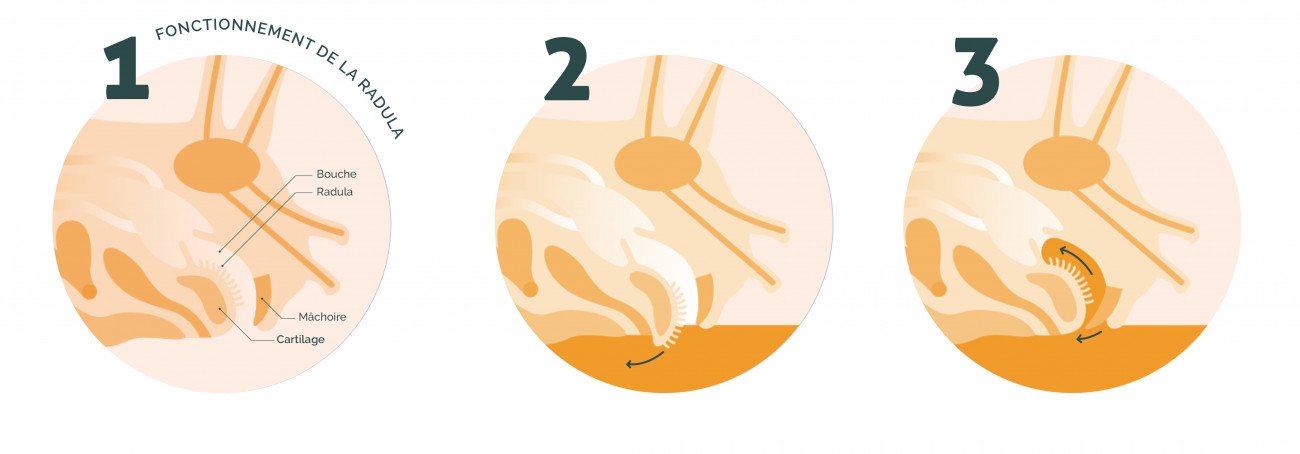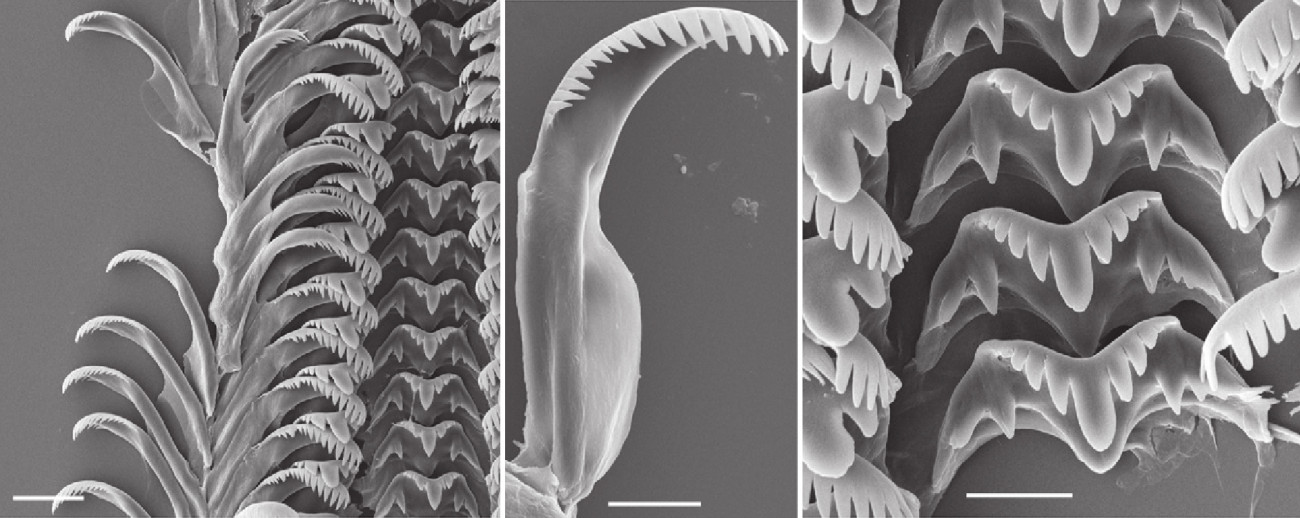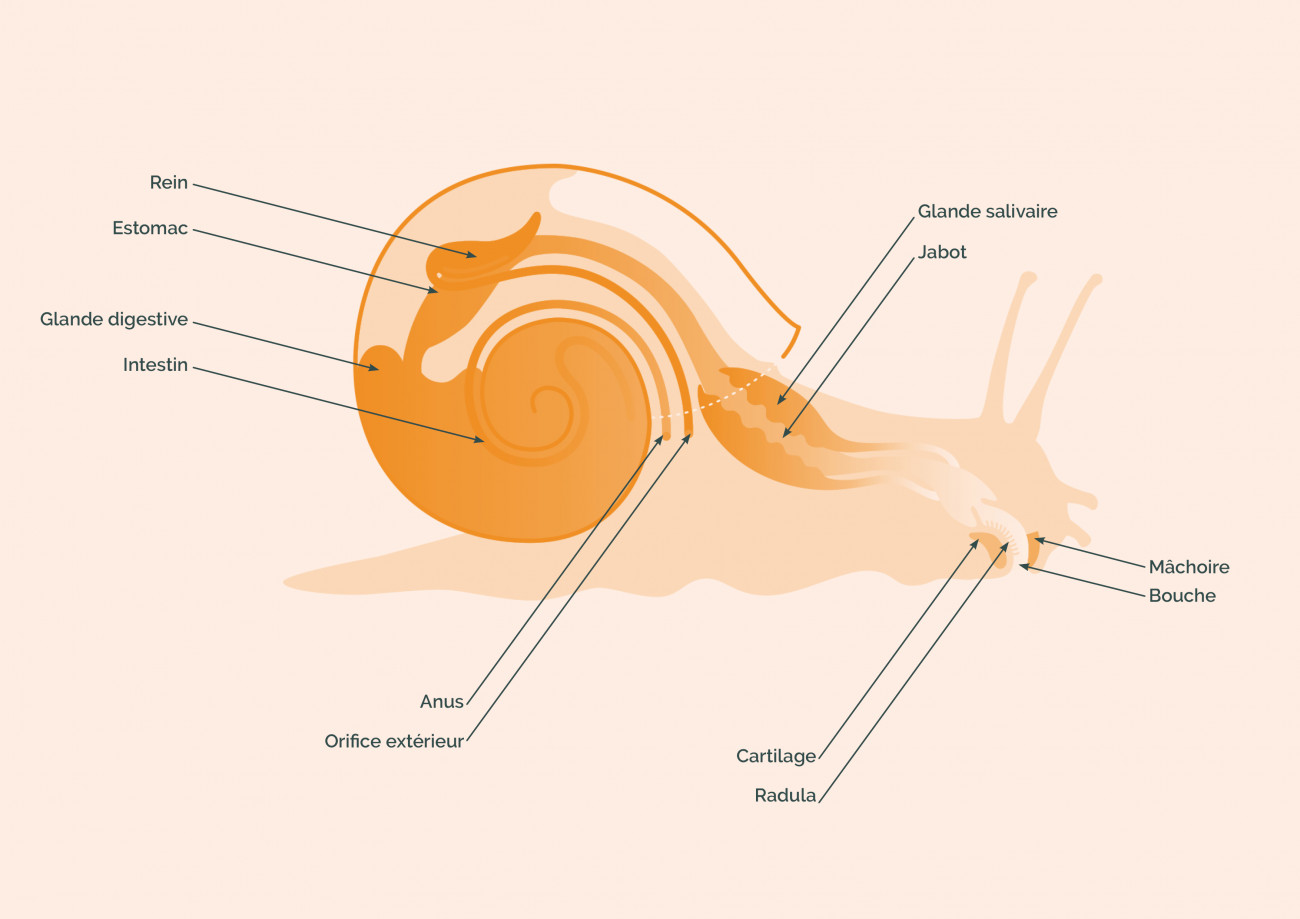Feeding regime
We generally think that snails are nice salad grazers... What is it really?
Plants yes, but mostly at night
The large species of snails (Petit-gris, Escargot de Bourgogne...) eat mainly in the morning or at nightfall and are often herbivores (they consume various species of plants such as nettles, ivy, plantains, centaury, burdock but also salads and cabbage). A Burgundy snail can eat up to 40% of its weight per hour, while the Great Snail is capable of eating up to 50% of its weight, or five to ten grams, in a single night!
The revenge of carnivorous snail
Other species of snails can have different diets and be detritivores, necrophagous or even carnivorous. This is notably the case of the species Gulella corneola, a snail from the Comoros Islands, which we see attacking another gastropod in the following video.
« Snail predation » @ UMS – 2006 PatriNat INPN
Some slugs such as Testacelles are also carnivorous and feed on earthworms. Less spectacularly, slugs can also feed on mushrooms, it is not uncommon to come across some protecting themselves in the shade of their hat!
How does the machine work?
Snails and slugs feed by grating their food through a limestone plate resembling a toothed tongue called a radula. After entering the mouth, the food passes into the crop where it is mixed with saliva. The food passes through the stomach and then to a digestive gland (these organs are found in the shell).
The snail's excrement then follows the opposite path and exits through the anus which is located under the edge of its shell ... very close to the pneumostome allowing breathing!
Predators of snails
Snails and slugs have well-known predators such as owls, foxes, badgers and hedgehogs, but there are many others...



